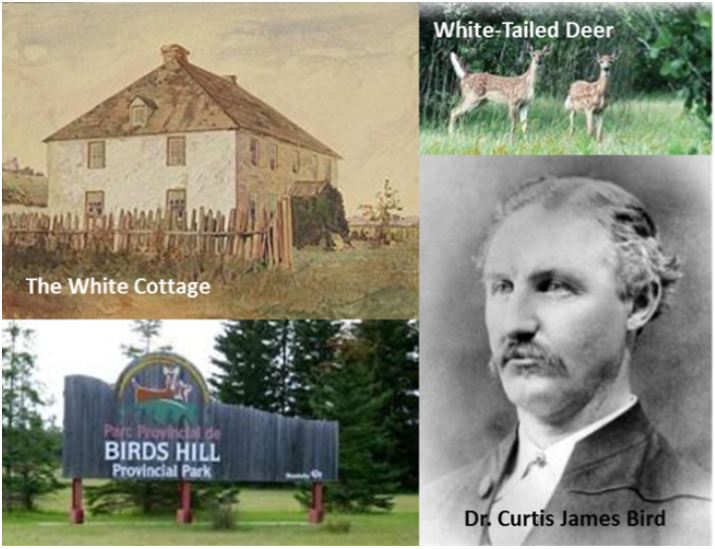
Bird’s Hill was named for the Bird family, who lived here during the early days of Manitoba settlement. James Curtis Bird (c. 1773-1856) was Chief Factor of the Red River District for the Hudson Bay Company and was renowned for his knowledge of the region. In 1824, he retired from 36 years of Company service and received a 3,000 acre land grant where he built his home called “the White Cottage.” The youngest of his 15 children, Dr. Curtis James Bird (1838-1876), ran a drug store with the first soda fountain in western Canada. He also served as the second speaker of the Manitoba Legislative Assembly (1873-4). The Bird’s and other settlers called the area ‘Pine Ridge,’ from which the town southeast of the park derives its name.
Bird’s Hill was a great blessing to colonists on the flat prairies. Though the fur trade wars between the HBC and the Northwest Company had ended and the Red River settlement was growing, the flood of 1826 ravaged the colony’s progress. Families fled to Stony Mountain, Silver Heights, and Bird’s Hill to take refuge from the water. Some settlers left Manitoba after the flood. Those who stayed would again flee to Bird’s Hill in the great flood of 1852.
The terrain of the hill was shaped by the ice age over 3,000 years ago. Boulders left by the glaciers or dropped from icebergs in Lake Agassiz can still be seen lying around the park. The glaciers also left large deposits of gravel which began to be mined in the early 1900s. This gravel was used in Winnipeg streets.
Settlers cleared brush from the forest and helped it expand by controlling wildfires. These manmade conditions allowed for a flourishing population of White Tailed deer to migrate north around 1900. Today, they constitute one of the largest concentrations of the species in North America. Bird’s Hill’s abundant wildlife and unique landscapes created interest in 1960s Winnipeg to turn it into a provincial park. This was done in 1964. Internal development of the area began and the official grand opening was held on July 15, 1967 as part of Canada’s centennial celebrations.
You can find an informational video on this topic here!